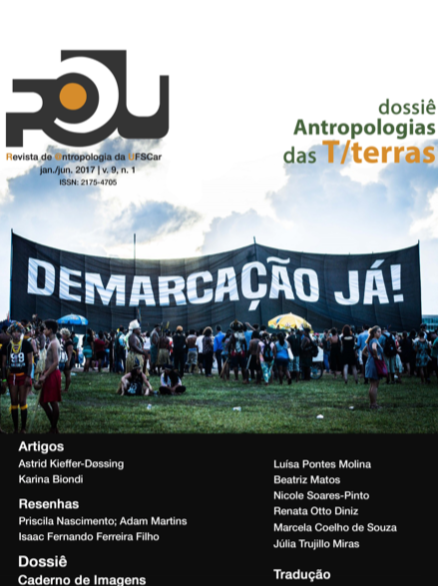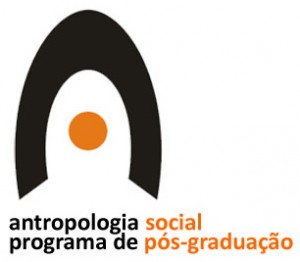Propriedade como conhecimento jurídico
os meios e os fins
DOI:
https://doi.org/10.52426/rau.v9i1.193Palavras-chave:
Antropologia da propriedade, Teoria jurídicaResumo
Esse artigo toma o renovado interesse dos antropólogos na teoria da propriedade como uma oportunidade para considerar a teoria e prática do direito como um tema etnográfico. Meu foco está em um constructo particular – o instrumento, ou as relações de meios para fins que animam tanto a teoria jurídica quanto a antropológica sobre proprie- dade.Uma análise da produção desse constructo leva-nos à conclusão deque menos do que uma crítica dos fins do conhecimento jurídico, a antropologia da propriedade deveria se dedicar a articular seus próprios meios.
Referências
ACKERMAN, B.A. 1977. Private property and the constitution: an essay in philosophy, eco- nomics, and the law of just compensation. New Haven: Yale University Press.
AGAMBEN, G. 2000. Means without end: notes on politics. Minneapolis: University of Minnesota Press.
ALEXANDER, G.S. 1997. Commodity and propriety: competing visions of property in American legal thought 1776-1970. Chicago: University Press.
ATIYAH, P.S. & R.S. Summers 1987. Form and substance in Anglo-American law: a comparative study of legal reasoning, legal theory, and legal institutions. Oxford: Clarendon Press.
BAILEY, M.J. 1992. Approximate optimality of Aboriginal property rights. Journal of Law and Economics 35, 183-98.
BATTAGLIA, D. 1990. On the bones of the serpent: person, memory, and mortality in Sabarl Island society. Chicago: University Press.
BIAGIOLI, M. 2004. Documents of documents: scientists’ names and scientific claims. Political and Legal Anthropology Review 27: 2.
BLACK, H.C. 1990. Black’s law dictionary. (Sixth edition). St Paul, Minn.: West Publishing. Bohannan, P. 1967. Law and warfare: studies in the anthropology of conflict. Garden City, N.Y.: Natural History Press.
BORNEMAN, J. 1997. Settling accounts: violence, justice, and accountability in postsocia- list Europe. Princeton: University Press.
BROWN, M.F. 2003. Who owns native culture? Cambridge, Mass.: Harvard University Press.
CALLON, M. 1998. Introduction: the embeddedness of economic markets in economics. In The laws of markets (ed.) M. Callon, 1-57. Oxford: Blackwell Publishers.
COHEN, M.R. 1927. Property and sovereignty. Cornell Law Quarterly 13, 8-30.
CONLEY, J. & W.M. O’Barr 1998. Just words: law, language and power. Chicago: University Press.
COOMBE, R.J. 1998. The cultural life of intellectual properties: authorship, appropriation, and the law.
DURHAM, N.C.: Duke University Press. Crook, T. n.d. Kim Kurukuru: an anthropological exchange with Bolivia, Papua New Guinea. Unpublished manuscript.
DEMSETZ, H. 1967. Toward a theory of property rights. American Economic Review 57, 347-59.
DEWEY, J. 1941. My philosophy of law. In My philosophy of law: credos of sixteen Ameri- can scholars, 71-85. Boston: Boston Law Book Co.
______1998a. The place of habit in conduct. In The essential Dewey, vol. 2: Ethics, logic, psychology (eds) L.A. Hickman & T.M. Alexander, 24-9. Bloomington: Indiana University Press.
_____ 1998b.Valuation and experimental knowledge. In The essential Dewey, vol. 2: Ethics, logic, psychology (eds) L.A. Hickman & T.M. Alexander, 272-86. Bloomington: Indiana University Press.
DUKEMINIER, J. 2002. Property. Chicago: The BarBri Group.
_____& J.E. Krier 2002. Property. (Fifth edition). New York: Aspen Law & Business.
ELLICKSON, R.C. 1991. Order without law: how neighbors settle disputes. Cambridge, Mass.: Harvard University Press.
FORTUN, K. 2001. Advocacy after Bhopal: environmentalism, disaster, new global orders. Chicago: University Press.
FRANK, J. 1930. Law and the modern mind. New York: Tudor Publishing Company.
GLUCKMAN, M. 1965. The ideas in Barotse jurisprudence. New Haven: Yale University Press. Goodwin, C. & A.
GOODWIN, C. & A. DURANTI. 1992. Introduction. In Rethinking context: language as an interactive phenomenon (eds) A. Duranti & C. Goodwin, 1-42. Cambridge: University Press.
GOODY, J. 1962. Death, property and the ancestors; a study of the mortuary customs of the LoDagaa of West Africa. Stanford: University Press.
GREENHOUSE, C. 1986. Praying for justice: faith, order and community in an American town. Ithaca, N.Y.: Cornell University Press.
HALE, R.L. 1923. Coercion and distribution in a supposedly non-coercive state. Political Science Quarterly 38, 470-94. Hann, C.M. (ed.) 1998. Property relations: renewing the anthropological tradition. Cambridge: University Press.
HANN, C.M. (ed.) 1998. Property relations: renewing the anthropological tradition. Cam- bridge: University Press.
HEIDEGGER, M. 1977. The question concerning technology and other essays (trans. W. Lovitt). New York: Harper & Row.
HIRSCH, S.F. 1998. Pronouncing and persevering: gender and the discourses of disputing in an African Islamic court. Chicago: University Press.
HOEBEL, E.A. 1954. The law of primitive man: a study in comparative legal dynamics. Cambridge, Mass.: Harvard University Press.
HOHFELD, W.N. 1913. Some fundamental legal conceptions as applied in judicial reasoning. Yale Law Journal 23, 16-59.
______.1917. Fundamental legal conceptions as applied in judicial reasoning. Yale Law Journal 26, 710-70.
HOLMES, D.R. & G.E. MARCUS forthcoming. Re-functioning ethnography: the challenge of an anthropology of the contemporary. In Handbook of qualitative research (eds) N. Denzen & Y. Lincoln. (Third edition). Thousand Oaks, Calif.: Sage Publications.
JAMES, W. 2000. What pragmatism means. In Pragmatism and classical American philosophy: essential readings and interpretive essays (ed.) J.J. Stuhr, 193-202. New York: Oxford University Press.
KAHN, P.W. 1999. The cultural study of law: reconstructing legal scholarship. Chicago: University Press. Kalinoe, L.K. 1999. Water law and customary water rights in Papua New Guinea. Papua New Guinea: Law Faculty Publication Unit.
KELSEN, H. 1941. The law as a specific social technique. University of Chicago Law Review 9, 75-97.
LATOUR, B. 1990. Drawing things together. In Representation in scientific practice (eds) M. Lynch & S. Woolgar, 19-68. Cambridge, Mass.: Massachusetts Institute of Technology Press.
______.2004. Scientific objects and legal objectivity. In Law, anthropology, and the constitution of the social: making persons and things (eds) A. Pottage & M. Mundy, 73-114. Cambridge: University Press.
LEACH, J. 2003. Creative land: place and procreation on the Rai Coast of Papua New Guinea. New York: Berghahn Books.
LLEWELLYN, K.N. 1931. Some realism about Realism: responding to Dean Pound. Harvard Law Review 44, 1222-64.
______& E.A. Hoebel 1941. The Cheyenne way. Norman: University of Oklahoma Press.
LYNCH, M. 1993. Scientific practice and ordinary action: ethnomethodology and social studies of science. Cambridge: University Press.
MALINOWSKI, B. 1972 [1934]. Introduction. In Law and order in Polynesia (ed.) H.I. Hogbin, xvii-lxxii. New York: Cooper Square Publishers.
______. 1984 [1926]. Crime and custom in savage society. Westport, Conn.: Greenwood Press. Maurer, B. 2003. Comment: got language? Law, property, and the anthropological imagination. American Anthropologist 105, 775-81.
______.2004. The ends of ethical practice: due diligence and ‘reasonable man’ offshore. Paper delivered at The Practice of Law and Development Conference, Cornell University, 20 April.
MERRY, S.E. 1990. Getting justice and getting even: legal consciousness among working-class Americans. Chicago: University Press.
MERTZ, E. 1996. Recontextualization as socialization: text and pragmatics in the law school classroom. In Natural histories of discourse (eds) M. Silverstein & G. Urban, 229- 49. Chicago: University Press.
MIYAZAKI, H. 2004. The method of hope. Stanford: University Press. Moore, S.F. 1969. Introduction. In Law in culture and society (ed.) L. Nader, 337-48. Chicago: Aldine Publishing.
_______.1978. Law as process: an anthropological approach. London: Routledge & Kegan Paul.
_______.2001. Certainties undone: fifty turbulent years of legal anthropology, 1949-1999. Journal of the Royal Anthropological Institute (N.S.) 7, 95-116.
MUNDY, M. 2004. Ownership or office? A debate in Islamic Hanafite jurisprudence over the nature of the military ‘fief’, from the Mamluks to the Ottomans. In Law, anthropology, and the constitution of the social: making persons and things (eds) A. Pottage & M. Mundy, 144-65. Cambridge: University Press.
NADER, L. 1972. Up the anthropologist: perspectives gained from studying up. In Reinven- ting anthropology (ed.) D. Hymes, 284-311. New York: Pantheon.
PARKER, K. 2003. The history of experience: on the historical imagination of Oliver Wen- dell Holmes, Jr. Political and Legal Anthropology Review 26: 2, 60-85.
PHILIPS, S.U. 1998. Ideology in the language of judges: how judges practice law, politics and courtroom control. New York: Oxford University Press.
PICKERING, A. 1997. Concepts and the mangle of practice: constructing quaternion. In Mathematics, science, and postclassical theory (eds) B.H. Smith & A. Plotnitsky, 40-82. Durham, N.C.: Duke University Press.
POTTAGE, A. 2004. Introduction: the fabrication of persons and things. In Law, anthropo- logy, and the constitution of the social: making persons and things (eds) A. Pottage & M. Mundy, 1-39. Cambridge: University Press.
_______& M. Mundy (eds) 2004. Law, anthropology, and the constitution of the social: making persons and things. Cambridge: University Press.
POUND, R. 1910. Law in books and law in action. American Law Review 44, 12-36. RABINOW, P. 1996. Essays on the anthropology of reason. Princeton: University Press.
RADCLIFFE-BROWN, A.R. 1952. Structure and function in primitive society, essays and addresses. Glencoe, Ill.: Free Press.
RILES, A. 2000. The network inside out. Ann Arbor: University of Michigan Press.
______.2001. Encountering amateurism: John Henry Wigmore and the uses of American
formalism. In Rethinking the masters of comparative law (ed.) A. Riles, 94-126. Oxford: Hart.
______.2004a. Real Time: Unwinding technocratic and anthropological knowledge. Ameri- can Ethnologist 31: 3, 1-14.
______.2004b. Introduction. In Documents: artefacts of modern knowledge (ed.) A. Riles. Special issue of Political and Legal Anthropology Review 27: 2.
______.2004c. Taking on technology: a new agenda for the cultural study of law. Yale Journal of Law and the Humanities 16, 269ff.
_______.n.d. Making white things white: an ethnography of legal knowledge. Unpublished manuscript.
ROBERTSON, S. 1979. Order and dispute: an introduction to legal anthropology. Oxford: Martin
ROSALDO, M.Z. 1980. Knowledge and passion. Cambridge: University Press.
ROSE, C.M. 1994. Property and persuasion: essays on the history, theory, and rhetoric of ownership. Boulder, Colo.: Westview Press.
ROSEN, L. 1989. Islamic ‘case law’ and the logic of consequence. In History and power in the study of law: new directions in legal anthropology (eds) J. Starr & J. Collier, 302-19. Ithaca, N.Y.: Cornell University Press.
SILVERSTEIN, M. & G. URBAN 1996. The natural history of discourse. In Natural histories of dis- course (eds) M. Silverstein & G. Urban, 1-20. Chicago: University Press.
SOTO, H. 2000. The mystery of capital: why capitalism triumphs in the West and fails everywhere else. New York: Basic Books.
STRATHERN, M. 1981. Culture in a netbag: the manufacture of a subdiscipline in anthropology. Man (N.S.) 16, 665-88.
______. 1991. Partial connections. Savage, Md: Rowman & Littlefield.
______.1995. The relation: issues in complexity and scale. Prickly Pear Pamphlet 6.
______. 1999. Property, substance and effect: anthropological essays on persons and things. London: Athlone Press.
______.2004. Social property: an interdisciplinary experiment. Political and Legal Anthropology Review 27: 1, 23-50.
SUMMERS, R.S. 1982. Instrumentalism and American legal theory. Ithaca, N.Y.: Cornell University Press.
TSING, A.L. 1993. In the realm of the diamond queen. Princeton: University Press.
VALVERDE, M. 2003. Law’s dream of a common knowledge. Princeton: University Press.
VERDERY, K. 1996. Post-1989 intellectual cooperation and intellectual property rights: a Romanian case. Eastern European Politics and Societies 10, 328-32.
______.1998. Property and power in Transylvania’s decollectivization. In Property relations: renewing the anthropological tradition (ed.) C.M. Hann, 160-80. Cambridge: University Press.
WEINER, J.F. 1991. The empty place: poetry, space, and being among the Foi of Papua New Guinea. Bloomington: Indiana University Press.
WEST, C. 1989. The American evasion of philosophy: a genealogy of pragmatism. Madison: University of Wisconsin Press.
WINNER, L. 1977. Autonomous technology: technics-out-of-control as a theme in political thought. Cambridge, Mass.: MIT Press.
YNGVESSON, B. 1993. Virtuous citizens, disruptive subjects: order and complaint in a New England court. New York: Routledge.
Downloads
Publicado
Como Citar
Edição
Seção
Licença
Copyright (c) 2021 Revista de Antropologia da UFSCar

Este trabalho está licenciado sob uma licença Creative Commons Attribution-ShareAlike 4.0 International License.





